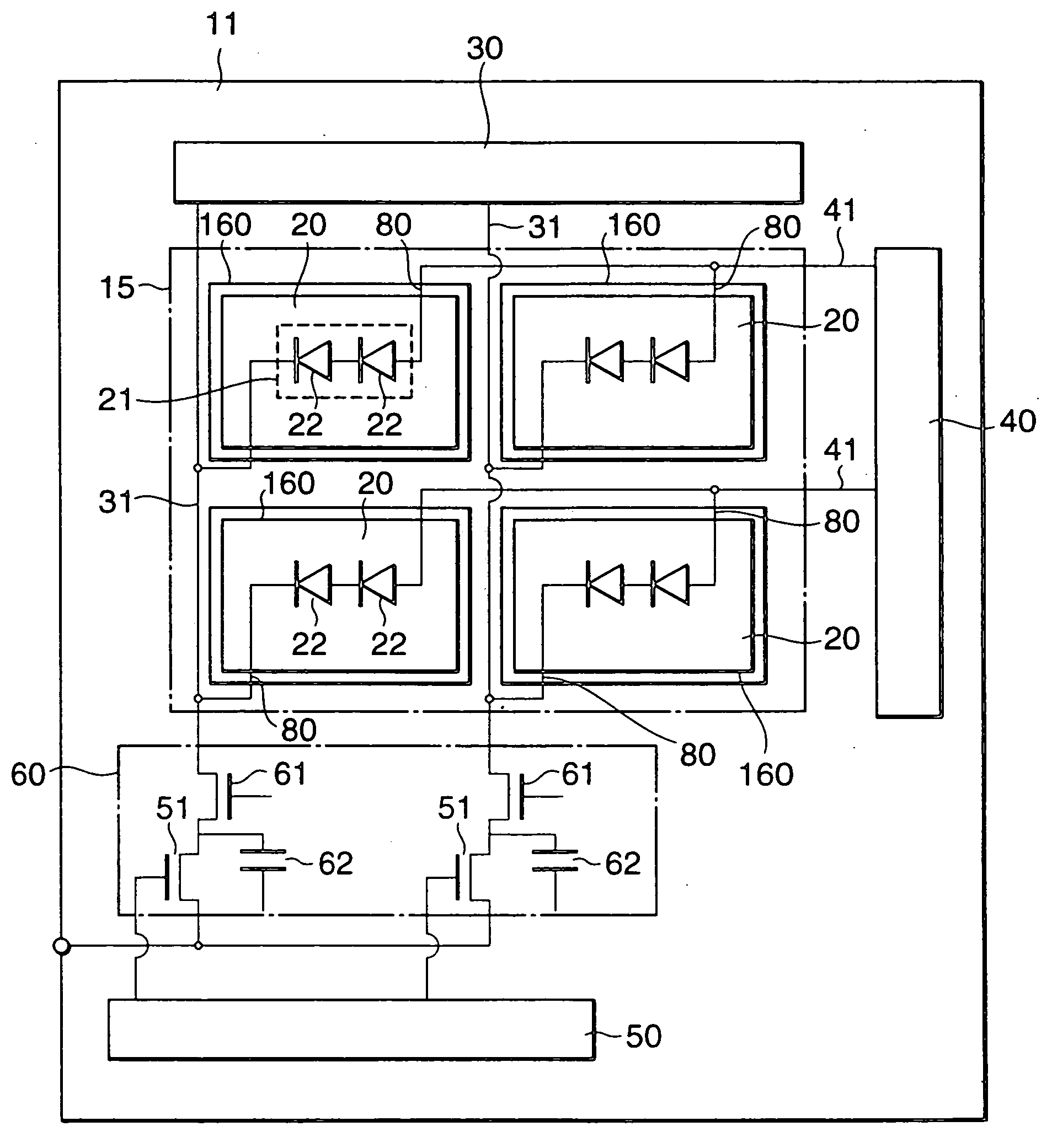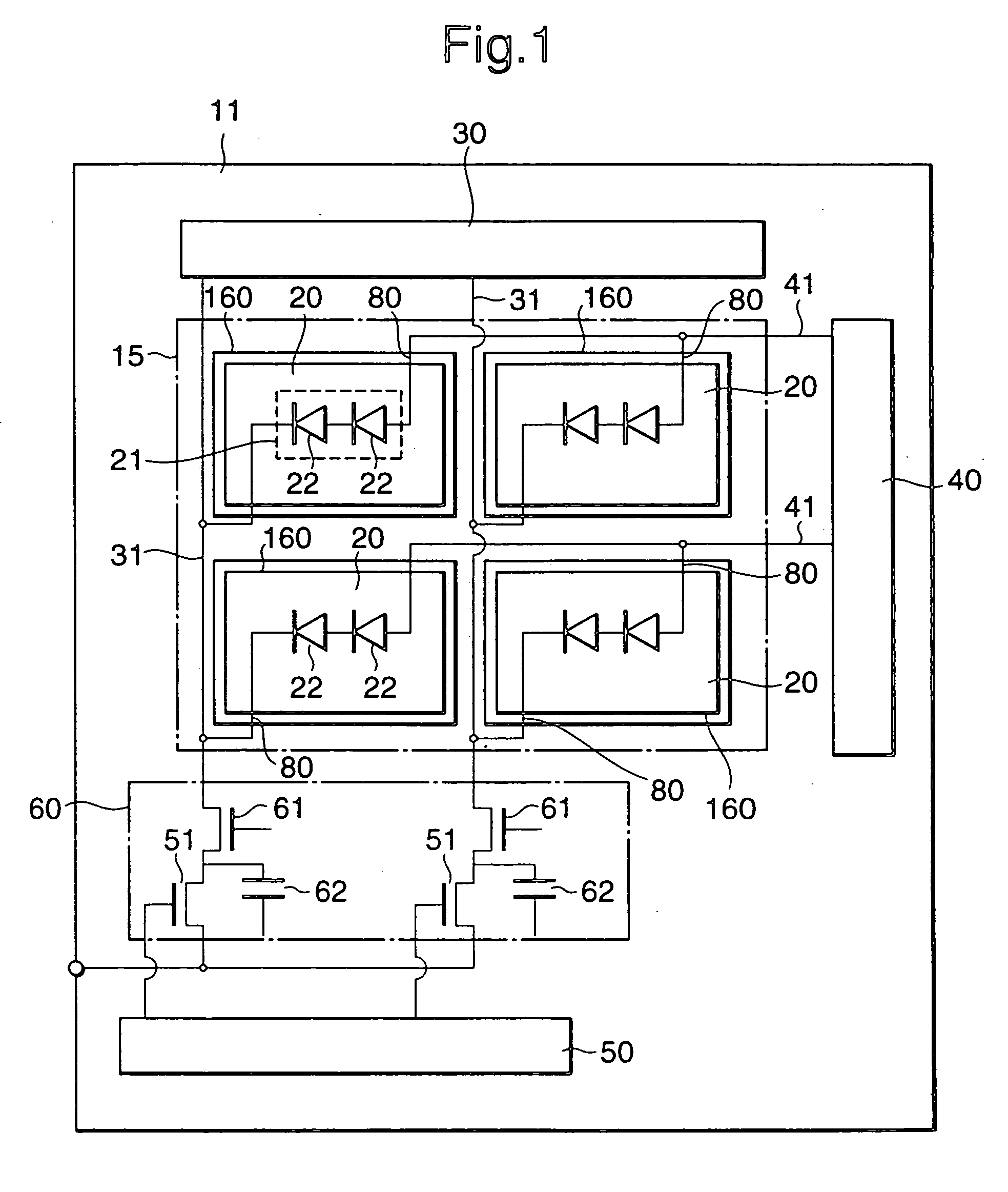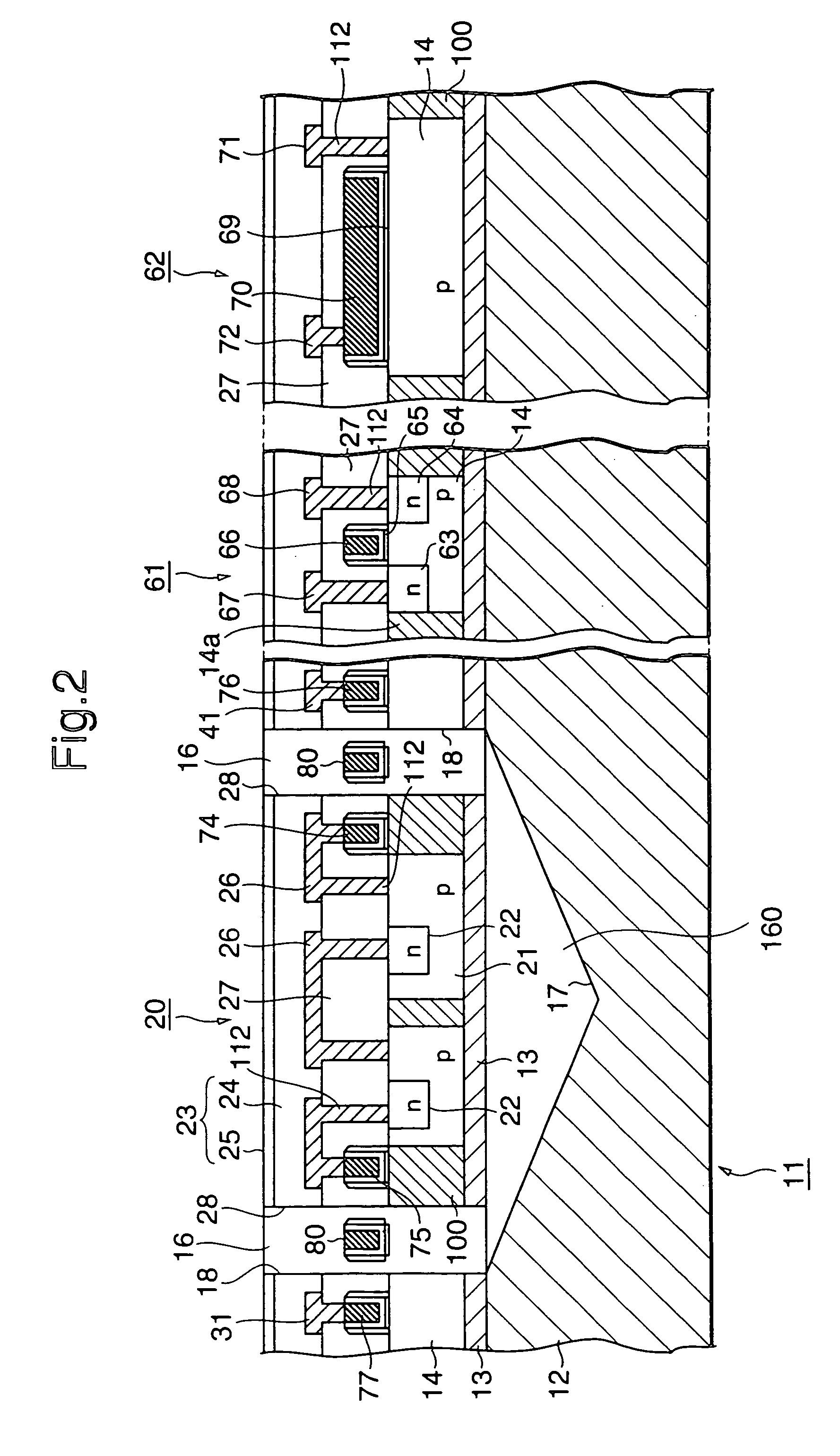Infrared sensor device and manufacturing method thereof
a manufacturing method and infrared sensor technology, applied in the field of infrared sensors, can solve the problems of difficult to achieve a further considerable amount of improvement in sensitivity by any optical means, difficult to further reduce thermal conductivity, and difficulty in achieving a considerable amount of further improvement in sensitivity. , to achieve the effect of reducing the length of the supporting beam line, and increasing mechanical strength
- Summary
- Abstract
- Description
- Claims
- Application Information
AI Technical Summary
Benefits of technology
Problems solved by technology
Method used
Image
Examples
first embodiment
[0059]FIGS. 1 through 4 represent an infrared sensor according to the present invention.
[0060] In the drawings, a semiconductor substrate 11 is composed of a single crystalline silicon semiconductor supporting substrate 12, an embedded silicon oxide insulating layer 13 provided on the substrate 12 and a single crystalline silicon semiconductor layer (SOI) layer 14. Such a substrate construction is called a silicon-on-insulator (SOI) construction.
[0061] Partitioned on the substrate 11 is an infrared detection region 15, within which multiple holes 16 and cavities 160 are arranged in a lattice. Each cavity 160 is reversed pyramid in shape and the hole 16 is open on the side of the SOI layer 14 of the substrate 11, thus penetrating the SOI layer 14 and the insulating layer 13 down to the semiconductor supporting substrate 12 and having its bottom surface the supporting substrate.
[0062] Infrared detection pixels 20 are disposed within the cavity 160 to be arranged into a matrix of two...
second embodiment
[0131] An infrared detection sensor according to the present invention will then be discussed.
[0132] FIGS. 8(a), (b) and (c) illustrate an infrared detection pixel portion according to a second embodiment of the present invention, wherein like reference characters denote like parts as in the first embodiment.
[0133] As shown in FIG. 8(b) illustrating an enlarged cross section of a supporting beam line 80a in relation to the first embodiment shown in FIG. 2, the construction is of Step (i) in FIG. 7, a construction of a supporting beam line 80 from which a damascene metal 108 has been eliminated.
[0134] In addition, it is shown on the surface layout of FIG. 8(a) that the supporting beam line 80a is linearly formed and considerably lessened in length.
[0135] Specifically, in this embodiment, because of the elimination of the damascene metal 108 which predominates the heat conduction through the supporting beam line 80a, the thermal conductivity per unit length of the supporting beam l...
fourth embodiment
[0152] As a result, the supporting beam line 80c serving also as a supporting leg as shown in the fourth embodiment can be implemented linearly, thereby considerably improving a fill factor, the ratio of the area of the infrared detection portion 20 occupied by the pixel. The aforementioned effect of optical sensitization may thereby be obtained as well.
[0153] In addition, since the supporting beam line according to the fourth embodiment has a linear pattern, its mechanical strength and stability will considerably be improved as well analogously to the first and second embodiments.
[0154] Conversely, if the supporting beam line according to this embodiment were applied to the supporting structure which has a spiral pattern, then its sensitivity would approximately be fifty times as high.
[0155] It is of course possible also in this case to leave the STI region 100 at the bottom of the supporting beam line 80c as shown in FIG. 7(g), with an increased heat conduction. Considering the ...
PUM
 Login to View More
Login to View More Abstract
Description
Claims
Application Information
 Login to View More
Login to View More - R&D
- Intellectual Property
- Life Sciences
- Materials
- Tech Scout
- Unparalleled Data Quality
- Higher Quality Content
- 60% Fewer Hallucinations
Browse by: Latest US Patents, China's latest patents, Technical Efficacy Thesaurus, Application Domain, Technology Topic, Popular Technical Reports.
© 2025 PatSnap. All rights reserved.Legal|Privacy policy|Modern Slavery Act Transparency Statement|Sitemap|About US| Contact US: help@patsnap.com



